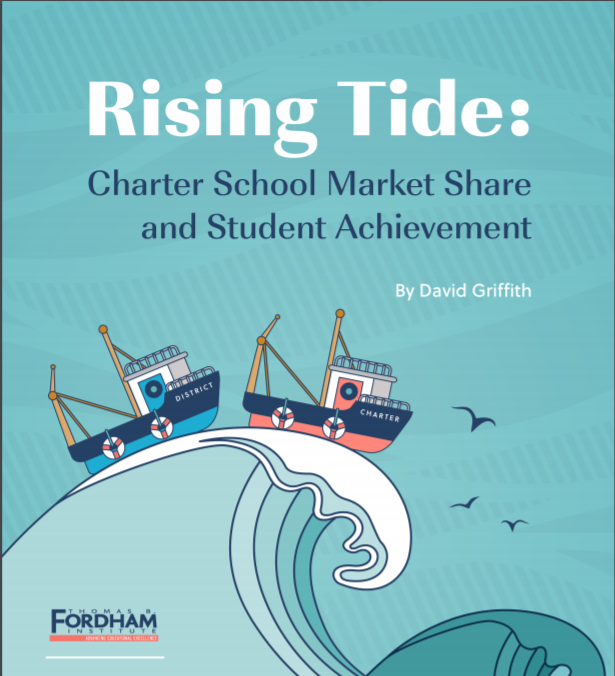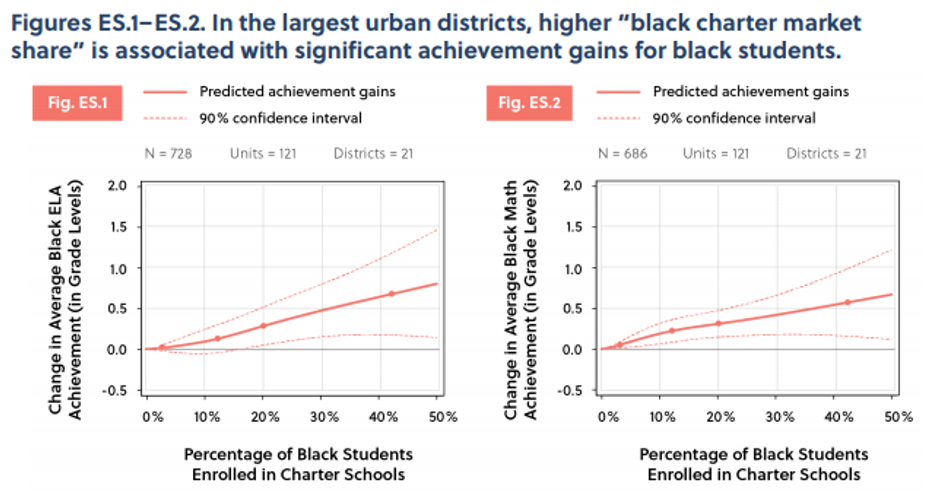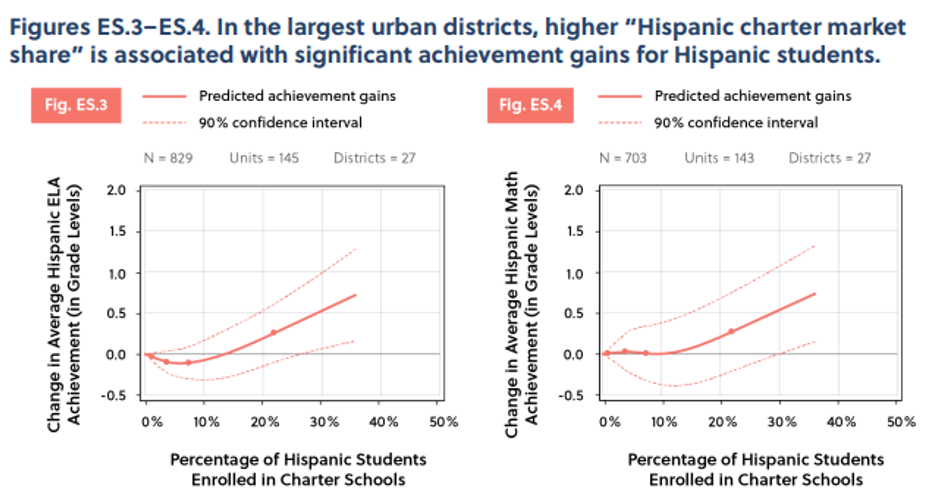 Forget about the charter vs. district school debate. The more important question is whether student achievement improves overall. Does a rising tide of charter school enrollment lift the overall achievement boat? The Fordham Institute released a report to address exactly that.
Forget about the charter vs. district school debate. The more important question is whether student achievement improves overall. Does a rising tide of charter school enrollment lift the overall achievement boat? The Fordham Institute released a report to address exactly that.
As charter school enrollment increases as a percentage of the total students within a district (called “market share” by the report’s authors), the achievement gains of all students, within both charter and district, improve. According to the report, urban areas with high concentrations of black and Hispanic enrollment in charter schools saw significant math and reading achievement gains for black and Hispanic students overall.


Hispanic students benefit in suburban and rural areas, while black students see achievement gains in rural areas, but not suburban ones. White students see no gains regardless of the location of the charter school or district.
“Increasing the percentage of black and Hispanic students who enroll in charters — especially in the largest urban districts, which educate millions of minority students per year — would significantly reduce the longstanding racial achievement gaps that are ostensibly of concern to policymakers,” the authors wrote.
These are striking results, especially given the National Association for the Advancement of Colored People’s call for a moratorium on charter schools. National teacher unions, which represent a mostly white teaching corps and also oppose charter schools, have been longstanding financial supporters of the civil rights group.
Fordham’s study is not without its limitations. The dataset covers seven years, the research is not randomized, and the results may be due to the fact that charter schools are disproportionately established within low-performing urban districts to begin with.
Still, author David Griffith notes that his report “is consistent with prior research that suggests black and Hispanic students learn more in charter schools, and that competition from charter schools has a positive, or at worst neutral, effect on traditional public schools.”


